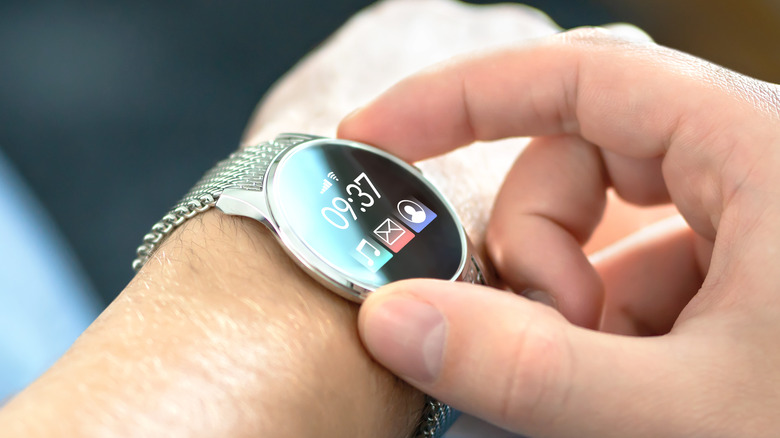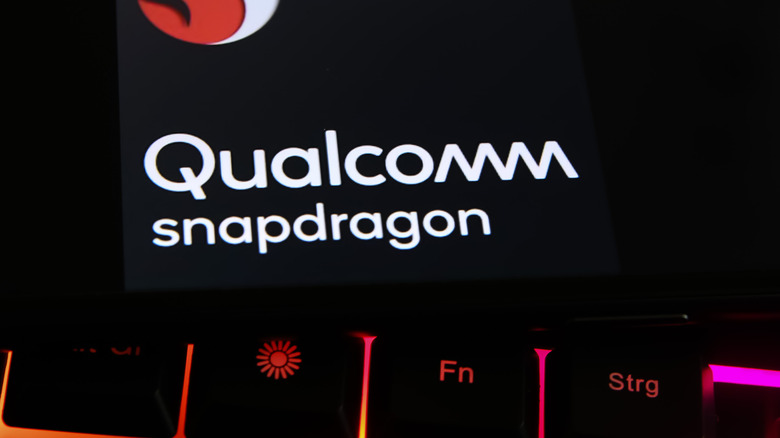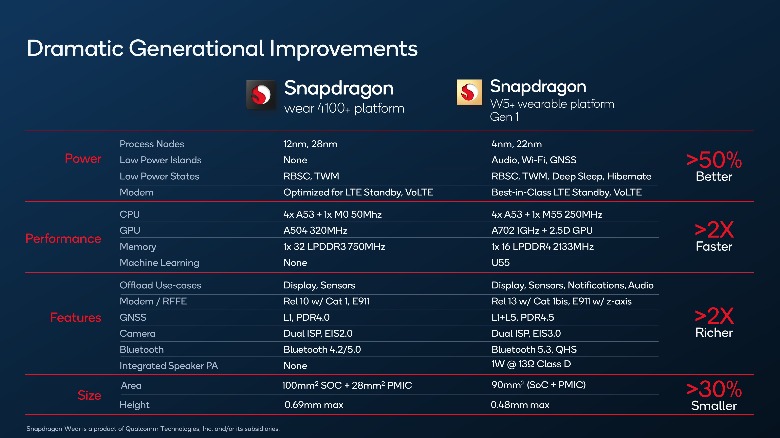Wear OS Is Finally Getting The Smartwatch Chip To Fully Take On Apple Watch
With more than 30% of the global smartwatch market share, according to Counterpoint, there is no denying that Apple pretty much dominates this space — in comparison, rival Samsung only has 10% of the market. In fact, these two brands combined account for more than 40% of the smartwatch market. With Apple and Samsung using their own chips in smartwatches, chipmakers like MediaTek and Qualcomm found it extremely difficult to crack this segment. In the instance of Qualcomm, the consensus was that its smartwatch-centric chips lagged behind offerings from both Samsung and Apple in terms of performance.
Making matters worse, Google's Wear OS platform — which powered a sizable chunk of smartwatches from brands other than Apple and Samsung — was not exactly known for its ease of use. The platform was also notoriously buggy. Simply put, things looked bleak for people interested in getting smartwatches that run Wear OS and use Qualcomm chips. Given that sad state of affairs, it was obvious that Qualcomm and Google wanted to do something to change this status quo. Things started to move after Google convinced Samsung to abandon its Tizen-based OS for its smartwatches and opt for Wear OS instead. The second significant change has arrived with Qualcomm announcing the launch of its next-generation chips for smartwatches.
Arguably the most important Qualcomm chip in recent history
Following a constant stream of teasers, Qualcomm announced its next-generation chips for smartwatches and wearables on July 19. Called the Snapdragon W5+ Gen 1 and Snapdragon W5 Gen 1, these new processors have an entirely new naming scheme even though they are direct successors to the Snapdragon 4100 and the 4100+ chips the company launched in 2020. The focus lies primarily on the Snapdragon W5+ Gen 1 chip, which will be the one that most Wear OS-toting smartwatches will use in the near future. The chip labeled Snapdragon W5 Gen 1 will only be used with some China-specific smartwatches and devices designed for kids, senior citizens, and commercial establishments.
A closer look at the spec sheet of the W5+ chip reveals that the new chips are a significant upgrade over their predecessors. To begin with, the W5+ chip is based on a 4nm manufacturing process as opposed to the 12nm process on the wear 4100+. This is nothing less than a generational leap in the world of microprocessors.
Qualcomm claims this change alone makes the W5+ platform 50% "better" than its predecessor. In addition to the main chip, the W5+ also includes a co-processor that is built using a 22nm manufacturing process. Qualcomm also claims the W5+ Gen 1 chip will offer 2x faster performance in most daily tasks you throw at watches. Improvements have also been made to the connectivity features, with the newer chips supporting faster network speeds and newer Bluetooth connectivity standards. The smaller manufacturing process also ensures that the actual SoC is physically smaller than its predecessors. This should also mean manufacturers will be able to reduce the size of smartwatches without compromising on performance or features.
When are the first W5+ smartwatches coming?
Typically when Qualcomm announces new chipsets, people have to wait for a long time before brands start using them on new devices. That is not the case with the Snapdragon W5+ Gen 1. The company confirmed the launch of two new smartwatches that will be the first commercial devices to use the new chip. The first smartwatch to use this chip will be the Oppo Watch 3, which the company expects to launch by August. The second confirmed product that will get the new chipset is a TicWatch model from Mobvoi. There is no launch date for this TicWatch model, but the company says the product will be available starting this fall.
In addition to these confirmed models, Qualcomm also took the launch as an opportunity to showcase two reference smartwatch designs. These two products labeled "Compal" and "Pegatron" will be used to showcase the improved capabilities of the Snapdragon W5+ platform to Qualcomm's customers. It will be interesting to see if the improvements to Wear OS and the arrival of these faster Qualcomm chipsets will help boost the sales of Wear OS toting smartwatches going forward.



